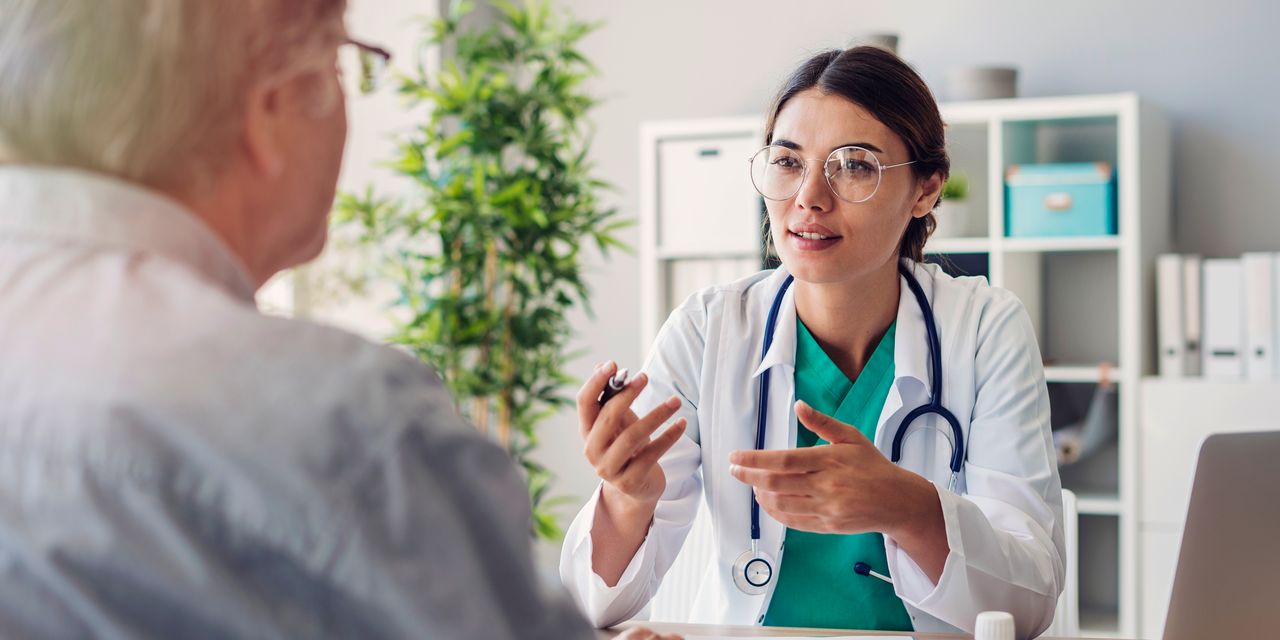The monkeypox outbreak in the U.S. is a reason for older Americans to be more vigilant, but not panic, experts said.
So far, there have been 9,492 cases of monkeypox confirmed in the U.S., according to the Centers for Disease Control and Prevention. This version of monkeypox kills less than 1% of infected patients, and so far, deaths have been reported only in Africa, according to the World Health Organization.
“It’s early in this monkeypox situation to assess the potential risks, but the senior population should be alert and aware. It’s not cause for panic,” said Jessica Holzer, assistant professor in the school of health sciences at the University of New Haven.
The heightened awareness of monkeypox comes as cases are rising and the U.S. is still battling the COVID-19 pandemic, which initially hit older populations very hard, especially those with compromised immune systems or those living in group settings.
U.S. known cases of COVID-19 appear to be declining based on numbers provided by a New York Times tracker, although the true tally is likely higher given how many people are testing at home, where the data are not being collected.
The daily average for new cases stood at 109,117 on Tuesday, according to the New York Times tracker, down 15% from two weeks ago. The daily average for hospitalizations was down 2% at 42,868, while the daily average for deaths is up 13% to 490.
Early monkeypox symptoms, which typically appear between five and 13 days after infection, include fever, headache, muscle ache, backache, swollen lymph nodes, chills and exhaustion, according to the CDC. Once a fever has appeared, a rash can erupt, typically concentrated on the face, hands and feet before spreading to other areas of the body. The rash progresses through several stages until it forms a scab, which will fall off.
“There’s been very few deaths. It makes you sick, but it’s not lethal in the way COVID is,” Ross McKinney, chief scientific officer of the Association of American Medical Colleges.
“There’s very few older people getting it. There haven’t been many cases. It’s been low risk – it hasn’t hit that population. Ninety eight percent of cases have been men in the gay population. It could leak out of that population, but it really hasn’t yet. We’ve known about this for decades. It’s not new or scary, it’s a known entity,” McKinney said.
“We’re not seeing fatalities in the U.S., but seniors should be on alert as they would with any health development,” Holzer said.
Monkeypox is closely related to smallpox, being in the same virus family. Smallpox vaccines are seen offering some protection against monkeypox, experts said, but those vaccines stopped in 1980.
“An older population has a potential advantage in that having had a smallpox vaccine earlier in their lifetime could offer some protective effect,” Holzer said.
A smallpox-vaccinated older adult may become infected with monkeypox, but are likely to experience only mild symptoms. The biggest threat of any viral outbreak is for elderly patients with comorbidities, experts said.
“Anyone with comorbidities such as cancer or diabetes should be more aware and more cautious, but that comes with any potential virus or illness,” Holzer said.
According to the CDC, Monkeypox can spread to anyone through close, personal, often skin-to-skin contact, including direct contact with monkeypox rash, scabs, or body fluids from a person with monkeypox, touching objects, fabrics such as clothing, bedding, or towels that have been used by someone with monkeypox.
Scientists are still researching if the monkeypox virus can be spread when someone has no symptoms and how and when in the infection cycle monkeypox is spread through respiratory secretions, according to the CDC.
For professional caregivers providing intimate care to an older patient, such as dressing or bathing, wearing gloves and protective gear and using universal precautions is the norm. For a family caregiver, there’s now even more reason to wash hands and use safety precautions if any rash or abnormality exists. If you have any reason to expect you’ve been exposed, line up secondary caregivers, experts said.
In nursing homes and other congregate care settings, where there are high incidence of sexually transmitted diseases, residents are at risk for monkeypox the same way they are at risk for any STD or illness that transmits with close, skin-to-skin contact, Holzer said.
“With monkeypox, the initial rash that is infectious, may not look that different than any skin abnormality. But be more vigilant and take precautions and don’t shrug it off at this time. And anytime you’re participating in sexual situations that aren’t monogamous, you should be aware and be safe,” Holzer said.
